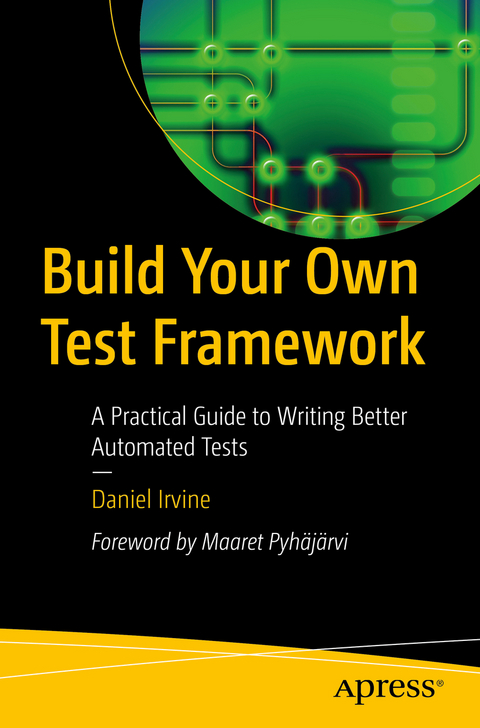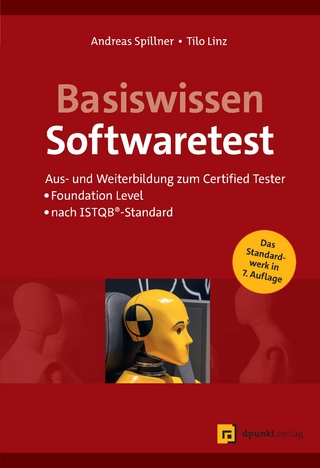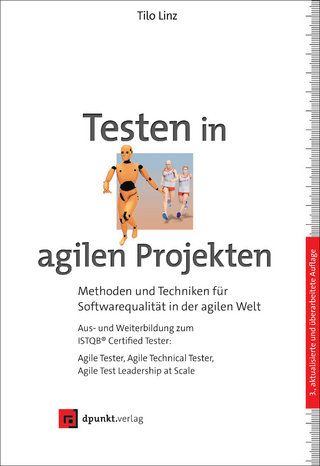
Build Your Own Test Framework
Apress (Verlag)
978-1-4842-9246-4 (ISBN)
You will build an xUnit automated test framework using JavaScript: initially a clone of Jest, but adding a couple of neat features borrowed from RSpec, the genre-defining tool for behavior-driven development (BDD). Along the way, you will explore the philosophy behind automated testing best practices. The automated test runner is one of the most important innovations within software engineering. But for many programmers, automated testing remains a mystery, and knowing how to write good tests is akin to sorcery.
As the chapters of this book unfold, you will see how the humble test runner is an elegant and simple piece of software. Each chapter picks a single feature to build, like the "it" function or the "beforeEach" block. It picks apart the theory of why the feature needs to exist, and how to use it effectively in your own test suites. Every chapter ends with a set of ideas for extension points should you wish to explore further, alone or in groups. The book culminates in an implementation of test doubles and mocks—one of the most difficult and misunderstood concepts within automated testing.
By the end of the book, you will have gained a solid understanding of automated testing principles that you can immediately apply to your work projects.
What You'll Learn
Build an xUnit automated test framework
See how an automated test runner works
Understand the best practices for automated unit testing
Effectively use test doubles and mocks
Who This Book Is For
Software developers with JavaScript experience who are seeking to master the art of automated testing.
Daniel Irvine is a freelance software developer based in London. He works with a variety of languages including C#, Clojure, JavaScript, and Ruby. When he’s not working, he spends time cooking, gardening and practicing yoga. He co-founded the Queer Code London meetup and is an active member of the European software craft community.
Chapter 1: Creating an NPM Package of My Very Own.- Chapter 2: Building it to Define a Test.- Chapter 3: Grouping Tests with Describe.- Chapter 4: Promoting Conciseness with BeforeEach and AfterEach.- Chapter 5: Improving Legibility with Expect.- Chapter 6: Formatting Expectation Errors.- Chapter 7. Automatically Discovering Test Files.- Chapter 8: Focusing on Tests with It.Only and Describe.Only.- Chapter 9: Supporting Asynchronous Tests.- Chapter 10: Reporting.- Chapter 11: Sharing Behavior with it.BehavesLike.- Chapter 12: Tagging Tests.- Chapter 13 : Skipping Tests.- Chapter 14 : Randomizing Tests.- Chapter 15. Understanding test doubles.- Chapter 16. Module Mocks.
| Erscheinungsdatum | 14.03.2023 |
|---|---|
| Zusatzinfo | 23 Illustrations, black and white; XXIV, 269 p. 23 illus. |
| Verlagsort | Berkley |
| Sprache | englisch |
| Maße | 155 x 235 mm |
| Themenwelt | Mathematik / Informatik ► Informatik ► Programmiersprachen / -werkzeuge |
| Informatik ► Software Entwicklung ► Qualität / Testen | |
| Schlagworte | asynchronous tests • automated testing • JavaScript • Jest • Rspec • test doubles • Unit Test |
| ISBN-10 | 1-4842-9246-4 / 1484292464 |
| ISBN-13 | 978-1-4842-9246-4 / 9781484292464 |
| Zustand | Neuware |
| Haben Sie eine Frage zum Produkt? |
aus dem Bereich


